Cultivate Magazine
Grade 9-12
In This Issue:
Contemporary artists of artprize

art and identity
slam poetry
art and aesthetiCs
interview with an artist
Cultivate Magazine

Presented by ArtPrize
Art and Design Magazine for Kids, featuring Artists of ArtPrize
Issue 2
Building an event is a lot like the act of creation. The process can be busy at times, relaxing at others. You’re filled with a range of conflicting emotions. Confidence is met with self-doubt. And sometimes our ideas can be limited to the materials we use.
But each time the good, hard work is done, our minds become richer and more fertile for the ideas that will follow. New growth will take root. It’s true for us as individuals, for us as an organization—and it’s true for the next generation of creative thinkers we seek to encourage.
For the second year, ArtPrize is teaming up with the amazing staff at Cultivate. We’re proud to partner with them again for this year's Education Days. Cultivate puts equity, accessibility, and multiple learning styles at the forefront of education. All their activities are made available for free, to ensure that all students may have access to high-quality arts education and programming. We couldn’t be more thrilled to have them elevating ArtPrize this year through these magazines, field trips, educational resources, and art tours.
Enjoy the art. And stay curious.
Catlin Whitington ArtPrize Executive Director
ArtPrize Education is supported in part by the Michigan Arts and Culture Council


1 ArtPrize Education Days
In This Issue
Cover: Christopher Blay [3D] The SpLaVCe Ship @ Calder Plaza, Image Courtesy of Artist
ArtPrize Artist Images:
Paloma Mayorga [3D] Cuerpos hechos de flores / Bodies made of flowers @ ArtPrize Culbhouse, Image Courtesy of Artist
Keren Kroul [2D] The Shape of Memory @ Monroe Community Church, Image Courtesy of Artist
Leandra Arvazzetti [Installation] Kudzu @ S I L V A, Image Courtesy of Artist
Roberto Jackson Harrington [3D] Taller de Harrington Showroom @ Kendall College of Art and Design, Image Courtesy of Artist
SRAU [Installation] Memory Room 203 @ S I L V A, Image Courtesy of Artist
Grace Fetzer [3D] Mah Zhure @ Grand Rapids African American Museum and Archives, Image Courtesy of Artist
Felipe Gomez [2D] Perfect Imperfections @ Monroe Community Church, Image Courtesy of Artist
Images:
Iulia Rontu Headshot, Image Courtesy of Artist
Experience Design Image: Iulia Rontu, Iterations on a Design System, Digital Media, 2023
Art Critic Image via Flickr by Bryan Barrett https://tinyurl.com/3syut9m9
Aesthetics Image via Flickr by slgckgc https://tinyurl.com/ycyjjsv2
Lascaux Cave Paintings via Flickr by Walwyn https://tinyurl.com/3b93cpmc
George Braque’s A Black Pedestal Image via Flickr by Martin Beck https:// tinyurl.com/2p9htf2w
Edgar Heaps of Birds’ Wheel via Flickr by Yosoynuts https://tinyurl. com/2s3rvkh8
Jenny Holzer’s Laments: I was sick from acting normal... via Flickr by Rob Corder https://tinyurl.com/3k966cc6S
Lorna Simpson’s Selections From Everything via Flickr by Rob Corder https:// tinyurl.com/2237965x
Zanele Muholi’s Phaphama, at Cassilhaus, North Carolina via Flickr by Rob Corder https://tinyurl.com/2zf72hjp
Curation
Mallory Shotwell
Graphic Design/Spot Illustration: Claudia Pimentel
Editorial/Copywriting: Mallory Shotwell
Actively teaching the Art and Artists of ArtPrize, Cultivate has created three magazines (grades K-3, 4-8, 9-12) that are Common Core standardized that can be a teaching tool and resource for art teachers and students year-round. These magazines will be distributed to art classrooms and schools across West Michigan and available at ArtPrize!
2 Cultivate Who does this book belong to? Name of school
3 Art History & Art Movements 6 Art and Identity 7 Contemporary Artists of ArtPrize 9 Identity and the Digital Age 10 Slam Poetry and Art 12 Art Criticism and Aesthetics 13 Interview with an Artist
Art History and Art Movements
Art History is the study of how art has evolved over time, encompassing various art forms such as painting, sculpture, and architecture. Art Movements, on the other hand, refer to specific periods or styles of art that share similar characteristics and goals.
Art has been a means of expressing human emotions, ideas, and beliefs throughout history. The earliest known artworks, dating back to prehistoric times, are cave paintings and rock art.
During the Middle Ages, art was primarily religious, with intricate paintings and sculptures decorating churches and cathedrals. The Renaissance marked a significant shift in art, with a renewed interest in classical Greek and Roman art and a focus on realism and perspective.

3 ArtPrize Education Days
Lascaux Cave Patintings in Dordogne, France
The 19th and 20th centuries saw the emergence of a variety of art movements. Impressionism originated in France in the 1860s, and was characterized by the use of light and color to capture a moment in time. Post-Impressionism followed in the late 19th century, which included artists such as Vincent van Gogh and Paul Cézanne, and emphasized the artist’s subjective interpretation of reality.
Expressionism, which originated in Germany in the early 20th century, used bold colors and distorted forms to express emotional and psychological themes. Cubism, developed by Pablo Picasso and Georges Braque in the early 1900s, broke down objects into geometric forms and challenged traditional perspective. Surrealism, which emerged in the 1920s, explored the subconscious and the irrational through dreamlike imagery. Pop Art, which emerged in the 1950s and 60s, celebrated popular culture and consumerism through bright colors and bold imagery.
Today, contemporary art continues to evolve and push boundaries, with artists experimenting with new techniques and mediums to create thought-provoking works of art. Understanding art history and movements is crucial to comprehend how art has developed and how it reflects the societies and cultures of its time.

4 Cultivate
George Braque’s A Black Pedestal
Famous Contemporary Artists TODAY
Let’s meet some artists doing this work now and study their work!
Edgar Heaps of Birds is an indigenous multi-discplinary artist from the Southern Cheyenne Tribe. He is best known for his public art messages exploring contemporary Native American issues.
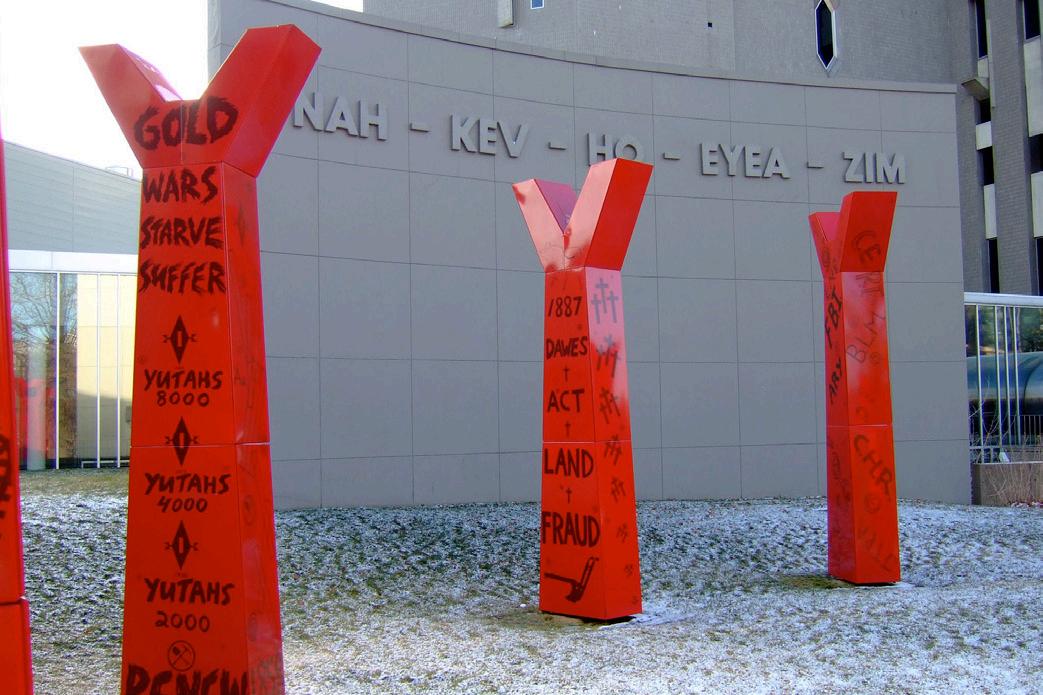
Zanele Muholi is a photographer and visual activist, known for her black and white portraits, whose work explores Black queer identity in contemporary South Africa.

Lorna Simpson is an American photographer and multimedia artist. She is best known for her photo, video, and collage work exploring memory, representation, and identity.

Jenny Holzer is an American neo-conceptual artist known for her word and text based public art projects using electronic technology, focusing on feminism and sexism.

5 ArtPrize Education Days
Art and Identity!
Art and Identity are two concepts that have been intertwined throughout history. In today’s world, the importance of art and identity has become even more significant as societies become increasingly diverse and complex.
Identity is a multifaceted concept that encompasses many aspects of a person’s life, including their race, ethnicity, gender, sexual orientation, religion, socioeconomic status, and cultural background; the sum of all these factors makes each person unique. Identity is not static; it is constantly evolving and changing as individuals navigate through life experiences and societal norms.
Art provides a powerful platform for individuals and communities to explore, define, and express their identities. It can challenge dominant narratives and promote social change, while also serving as a form of healing and self-exploration. As societies become increasingly diverse and complex, the role of art in shaping and reflecting identity will only become more significant.
One example of art and identity coming together is the Harlem Renaissance, a cultural movement that emerged in the early 20th century in Harlem, New York. African American artists, writers, and musicians used their creativity to express their unique experiences of being Black in America. Through their art, they challenged racist stereotypes and contributed to the broader civil rights movement.
Similarly, the LGBTQ+ community has used art to explore and express their identities. From the Stonewall riots to contemporary queer art exhibitions, LGBTQ+ artists have used their creative expression to challenge heteronormative culture and push for greater visibility and acceptance.
6 Cultivate
Contemporary Artists of ArtPrize You Can Visit This Year

SRAU [Installation] Memory Room 203 @ S I L V A, VOTE ID 61023
College of Art and Design, VOTE ID 91703
Paloma Mayorga [3D] Cuerpos hechos de flores / Bodies made of flowers @ ArtPrize Culbhouse, VOTE ID 04586

Keren Kroul [2D] The Shape of Memory @ Monroe Community Church, VOTE ID 26740
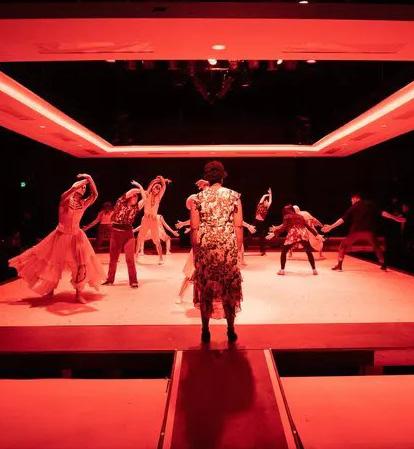
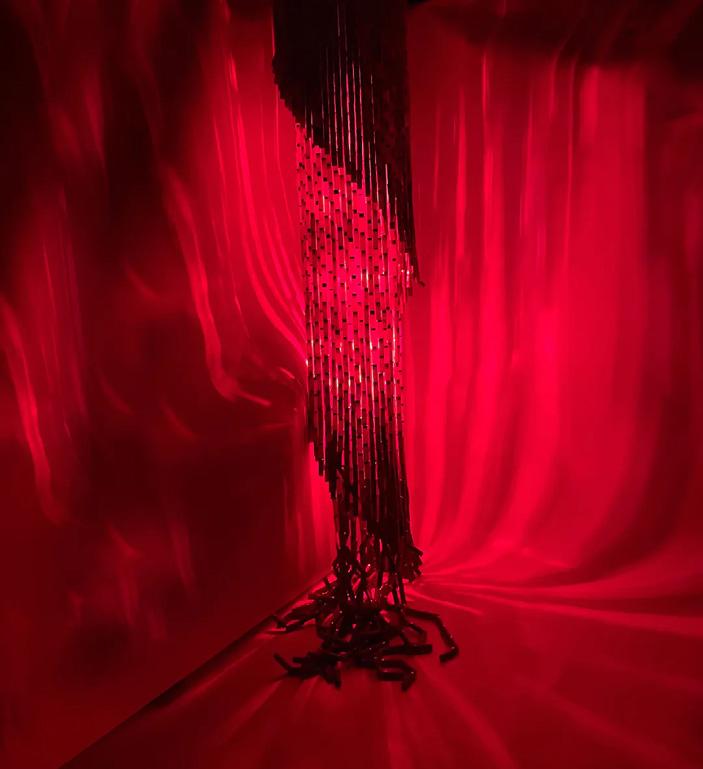


Grace Fetzer
Mah Zhure @ Grand Rapids African American Museum and Archives, VOTE ID 33181
7 ArtPrize Education Days
[3D]
Leandra Arvazzetti [Installation] Kudzu @ S I L V A, VOTE ID 26375
Roberto Jackson Harrington [3D] Taller de Harrington Showroom @ Kendall
10 Questions you can ask artists this year at ArtPrize!
What inspired you to become an artist?
What artists, styles, or movements have influenced your work?
What are some of your favorite subjects to paint or draw?
How has your style evolved over time?
How do you begin a new piece of art?
What materials and techniques do you use?
Do you collaborate with other artists or organizations?
Do you mentor younger artists?
What message or emotions do you hope your art conveys?
How do you want your art to impact viewers?
8 Cultivate
Identity and the Digital Age:
How Contemporary Artists are Responding to Technological Change
Technology is rapidly changing the way we live, work, and communicate with one another. As our lives become increasingly digitized, we are faced with new questions about our identity and our relationship to the world around us. Contemporary artists are responding to these questions by exploring the ways in which technology is shaping our understanding of self and society.
Many contemporary artists are using Digital Media to create works that challenge traditional notions of identity and representation. Artist Cory Arcangel has created a series of works that use computer software to manipulate and transform images, disrupting the viewer's expectations and challenging their understanding of reality.
As we become increasingly reliant on digital technology, it is important to consider how this is shaping our understanding of self and society. By engaging with these questions through their work, contemporary artists are helping us to think critically about the impact of technology on our lives and our relationship to the world around us.
With Digital Media, contemporary artists challenge our assumptions about the nature of reality and the role of the artist in society. As we continue to grapple with the impact of technology on our lives, it is important to look to artists as a source of insight and inspiration. Through their work, they offer a window into the complex and ever-changing nature of identity in the digital age.
Scan the QR code to check out Cory Arcangel’s work!

9 ArtPrize Education Days
Slam Poetry and Art
Slam Poetry is a form of spoken word poetry that is performed in front of an audience, often in a competitive setting. Slam poetry is not just about the words, but also about the performance; the poets use their body language, voice, and tone to convey their message.
Many poets use slam poetry as a way to express their identity and share their experiences with the world. Slam poetry is a platform for marginalized voices, and many poets use it to explore issues of race, gender, sexuality, and other aspects of their identity.
The performance aspect of slam poetry allows poets to use their bodies and voices to create a powerful and emotional experience for the audience. The use of imagery, metaphors, and other literary devices in slam poetry also makes it a form of art.
Slam Poetry Fun Facts!
Origin and Roots: Slam poetry emerged in the 1980s as a fusion of performance art, spoken word, and competitive poetry. It found its beginnings in Chicago's Green Mill Tavern, drawing inspiration from poetry readings, rap battles, and jazz performances.
One of the defining characteristics of slam poetry is its emphasis on authenticity. Unlike traditional forms of poetry, slam poetry is not about following a set of rules or conventions. Instead, it is about speaking from the heart and sharing one’s truth with the audience. This focus on authenticity allows slam poets to create a powerful connection with their audience and to use their art as a means of social and political commentary.
10 Cultivate
"Poetry is the lifeblood of rebellion, revolution, and the raising of consciousness."
- Alice Walker
Slam poetry has become an important tool for activism. Many slam poets use their platform to raise awareness about social issues and to advocate for change. Through their poetry, slam poets can shed light on issues that are often ignored or misunderstood by society.
In addition, slam poetry has the power to challenge dominant narratives and stereotypes. By sharing their personal stories and experiences, slam poets can break down barriers and promote empathy and understanding.
Slam poetry is a powerful form of art that allows individuals to express their identities, share their experiences, and advocate for change. Through their performances, slam poets can create an emotional and transformative experience for their audience, and inspire them to become agents of change in their own lives and communities.
Importance of Slam Poetry
Slam poetry has been instrumental in giving a platform to voices that are often marginalized or unheard. It provides a space for people to share their personal stories, experiences, and perspectives, especially those related to social justice, identity, and inequality.
Scan the QR Code to learn about Button Poetry!

11 ArtPrize Education Days
"Slam is not just a competition. It's a process, an art form, a community, and a platform for voices that might otherwise not be heard." - Phil Kaye
Art Criticism and Aesthetics
Art Criticism and Aesthetics are two important concepts in the world of art. Both play a crucial role in understanding and analyzing works of art.
Art Criticism is the process of evaluating, interpreting, and analyzing works of art. It involves using various techniques to understand the different elements of a piece of art, such as its composition, color, texture, and style. Art criticism can also involve examining the historical, cultural, and social context in which a work of art was created.
One of the key goals of art criticism is to determine the value of a work of art. This can be done by examining its aesthetic qualities, its technical skill, and its cultural significance. Art criticism is an important tool for both artists and viewers of art, as it helps to deepen our understanding and appreciation of the art that we encounter.
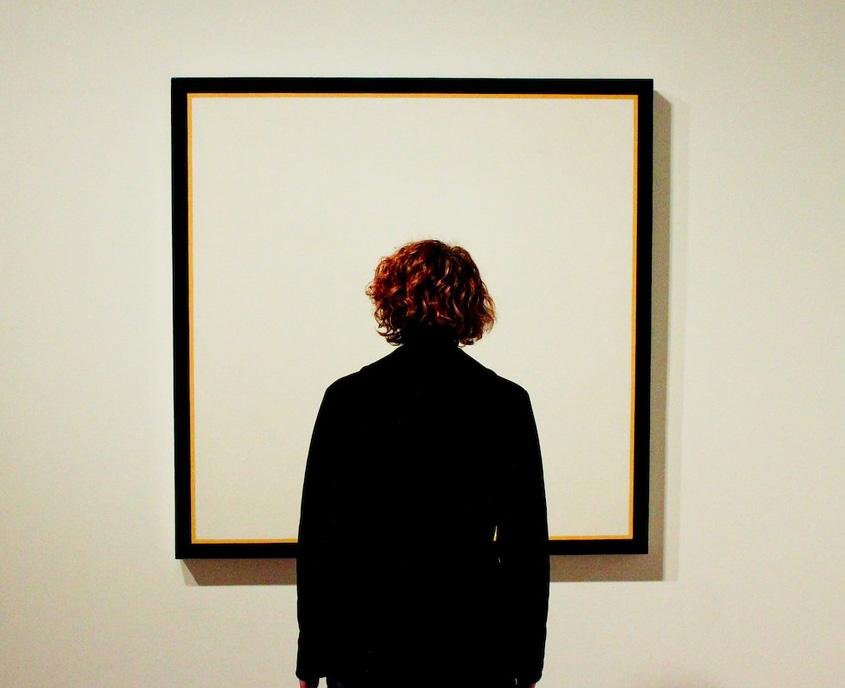
Aesthetics is the study of beauty and the principles that govern it. It is concerned with the subjective experience of art, and how we respond to different visual stimuli.
The aesthetic experience means to appreciate something for its beauty or artistic value. This can be enhanced by a number of factors, such as the skill of the artist, the composition of the artwork, and the viewer’s own emotional and psychological state.
Aesthetic judgment refers to the process of evaluating a work of art based on its aesthetic qualities. Aesthetic judgment is highly subjective, as what one person finds beautiful or meaningful may not be the same as what another person finds beautiful or meaningful.
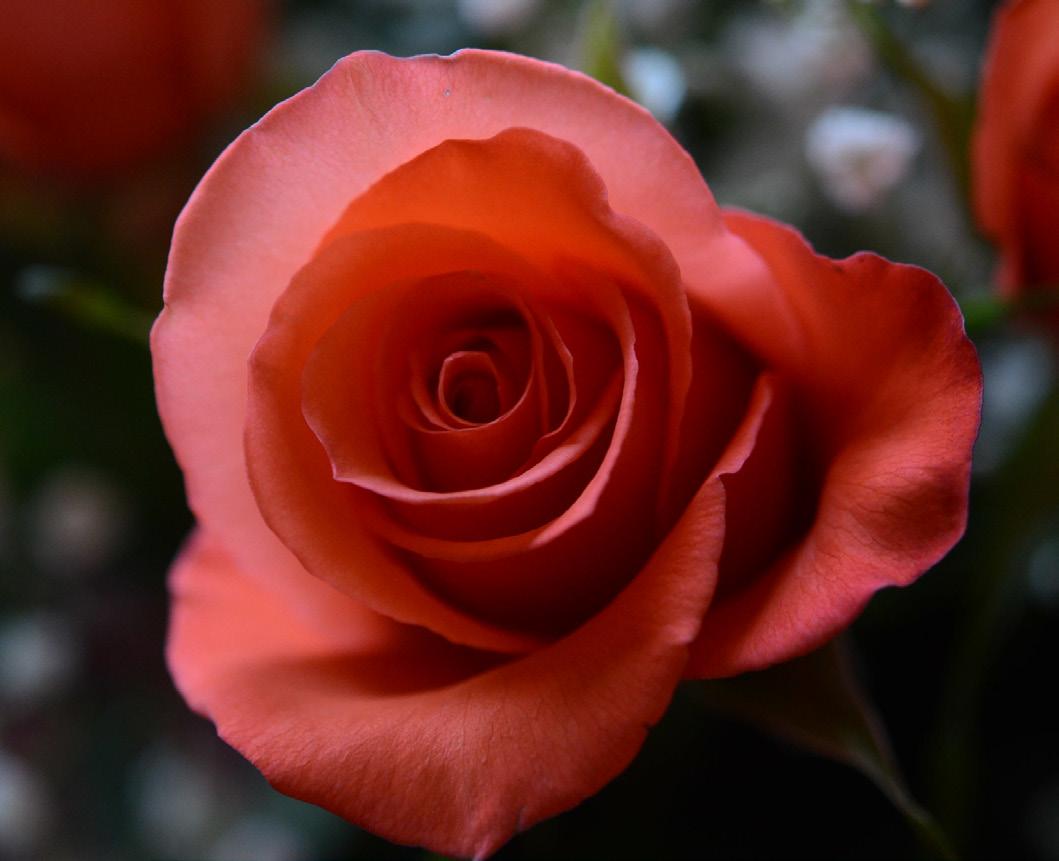
12 Cultivate
Interview With an Artist
Iulia Rontu, Experience Designer
Can you tell us a little about your background and how it has influenced your artwork?
Growing up a tiny little immigrant kid, I was very shy and introverted. That “path” led me to being an indoor kid very early who quickly became very fond of technology. Fast forward a couple of years, and I was teaching myself to code websites and draw my little anime doodles with a mouse with good old Photoshop 7. My passion for tech and digital art led to my getting a BFA in Graphic Design from Kendall, and eventually building a career in User Experience Design! I’ve been very fortunate to work with some incredible brands including Meijer, Merrel Outdoor, Nucraft, and Harper Collins and flex my ability to communicate and advocate for inclusive experiences.
How do you use your art to express your personal identity and experiences?
My design work is really focused at the intersection of mental health and inclusive design. I’m passionate about being a citizen designer that designs experiences that most everyone can access. I like wrestling with experiences that bring to light mobility, cognitive processing, and visual processing challenges.

Can you describe your creative process and how you decide what ideas to explore in your art?
As a designer, my process is focused on gathering constraints first. The first half of my process is focused in figuring out what I CAN’T do. I look at who I’m designing for and the contexts they may find themselves in. One fun example was designing a receipt-capture experience for truck operators. The biggest “aha” moment for me came in interviewing potential users to understand that they are often trying to submit expenses at night, in a cramped truck cabin. Boom - I prioritized a dark mode, larger buttons, and more robust flash capabilities and the experience was a hit!
As long as the idea has potential to help or to educate, it’s going into my work. If it has potential to harm individuals — I will do everything in my power to avoid it.
13 ArtPrize Education Days
How do you balance creating art that is true to your identity while also appealing to a wider audience?
At my core, I value transparency and inclusivity. As a UX designer, I often function as a middleman translator between a business and a human. This usually shows up in the form of a website, app, or other digital experience that is meant for people other than me. My designs represent me through my attention to detail, strategic decisions, and a the wealth of knowledge and experience I apply to create something that works for as many people as possible.
Iterations on a design system with a docus on website accessibility compliance (WCAG 2.0)

How has your art evolved over time in terms of how you express your identity?
I used to avoid bringing my identity and personal beliefs into my design at all, so I hope there’s some significant evolution! As I had more and more experiences sharing my personal identity that were met openly and positively, I realized I wanted to somehow create experiences that imparted the feeling of welcoming and belonging. It felt harder and harder to not include my perspective to the point where it became automatic. After all - I’m a person. I’ve lived. I have things to share!
What advice would you give to other artists who want to use their art to express their identity and share their personal experiences with the world?
The vulnerability and anxiety is so worth the impact. If you have the ability to share your experiences — especially if they might show a different way of existing — you should do it if you feel safe doing so. Your story will change hearts and minds. And you don’t (and shouldn’t) do it alone. Have a support network that can help you when this very emotional work gets emotional.
14 Cultivate


15 ArtPrize Education Days
Felipe Gomez [2D] Perfect Imperfections @ Monroe Community Church, VOTE ID 70096
For the of Art ( Prize )



























